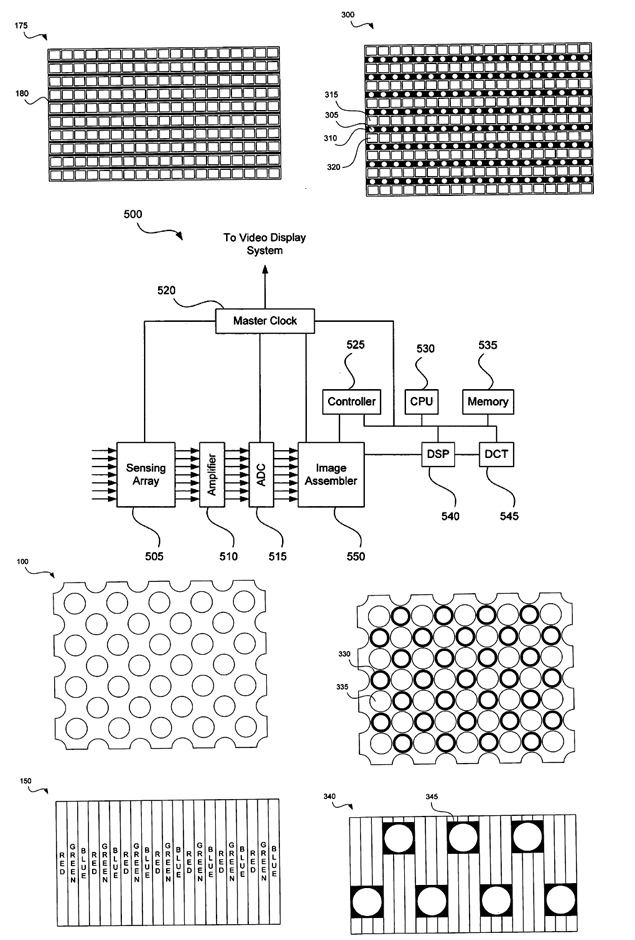Apple's patent for an LCD display that also takes photos, video
The filing, which predates the iPhone's release by nearly three years, describes a new breed of LCD display that could simultaneously take photos while continuing its role as the primary display screen of an electronics device or computer monitor.
The idea behind the invention is to wedge thousands of microscopic image sensors between the LCD cells that make up the display, where each sensor would be responsible for capturing a piece of the overall photo. Those pieces would then be stitched together by software to recreate the complete image capture.
According to the filing, made back in June of 2004, the tiny image sensors could also have variable focal lengths in order to zoom and focus the image: "The lens might either be physically moved or have its properties altered. In the latter case, the lens might be made of a material that changes its refractive index in response to electrical stimulus or a magnetic field."
The filing has a newfound relevance given recent claims by Digg founder Kevin Rose that Apple's forthcoming iPhone revision will include a camera mounted on the face of the unit to coincide with a mobile version of iChat suited for handheld video conferencing.
While Rose's track-record on predicting Apple's future directions is akin to a hit or miss affair, the advent of video conference via iPhones is seemingly inevitable given time. Therefore his proposals, as well as those outlined in the patent, could potentially surface slightly further down the road should they not be part of Apple's more immediate plans.
Of particular interest in this regard, is the electronics maker's claims that 'integrated sensing displays' are ideally suited for video conferencing on handhelds, where the available real estate limits the number of components — such as a front mounted cam in addition to a rear-mounted cam — that can fit into the devices.
"A panel created from an integrated, embedded macro charge-coupled devices (CCD) would thus be able to both display and record visual information simultaneously, without the use of an external video capture device. Simply put, the same panel could display a video conference while also recording the participant sitting in front of it," the company said in the filing.
"A video panel that has an embedded macro CCD is no longer just a display. It can be used to transmit as well as receive visual information. One use and benefit for such a panel is video conferencing: a user can maintain eye contact with someone on screen because the camera is 'in' the screen. In addition, portable devices, such as portable digital assistants (PDAs) and cell phones, have very limited space for displays and would benefit if additional real estate were not used for a camera."
The patent filing was published by the United States Patent and Trademark Office in April of 2006 alongside three other filings pertaining to wireless iPods, iChat whiteboards, and virtual touch-screen keyboards — technologies which were all later implemented in shipping Apple products.
 AppleInsider Staff
AppleInsider Staff











 Mike Wuerthele
Mike Wuerthele

 Malcolm Owen
Malcolm Owen
 Chip Loder
Chip Loder

 William Gallagher
William Gallagher
 Christine McKee
Christine McKee
 Michael Stroup
Michael Stroup






